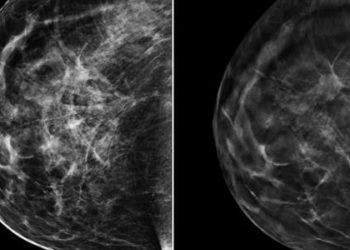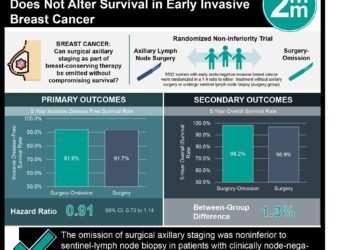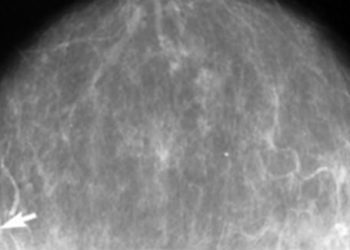Breast ultrasound may improve cancer detection in dense breasts
1. Among asymptomatic women with dense breasts, the combination of automated breast ultrasound (ABUS) with routine screening mammography increased detection rates for invasive cancer when compared to screening mammography alone.
Evidence Rating: 2 (Good)
Study Rundown: Dense breast tissue limits the sensitivity of diagnostic and screening mammography in a population of women that is known to be at an inherently higher risk for the development of malignancy. Women with dense breast tissue are often referred for additional imaging—generally breast ultrasound or magnetic resonance imaging— to increase the sensitivity of identifying suspicious breast lesions. Both of these techniques have drawbacks, however, and are often criticized for their cost, variability in interpretation, and image acquisition time. ABUS is a new technology that standardizes the image acquisition process, decreases time of acquisition, and can provide a unique three-dimensional reconstructed view of the breast tissue not provided by the current screening standards. In the present study, researchers evaluated a large cohort of women referred for routine screening mammography, and provided additional imaging in the form of ABUS. The study’s results suggest that ABUS can help detect additional cancers not identified by screening mammography alone, and that the cancers detected by combined mammography and ABUS are usually more advanced. With the combined approached, there was noted to be a decrease in the positive predictive value and an increase of the false positive detection rate, which led to an increase in the biopsies and interventions performed. The primary strengths of this trial include the large sample size and the prospective, multicenter methodology; the primary weaknesses are the lack of randomization and overall short duration of follow-up. In summary, ABUS has the potential to increase the detection of invasive cancers, whose early detection may help decrease morbidity and mortality. Further large, randomized trials are necessary to validate its widespread use.
Click to read the study in Radiology
Relevant Reading: Mammography in combination with breast ultrasonography versus mammography for breast cancer screening in women at average risk.
In-Depth [prospective cohort]: This observational, multicenter study prospectively enrolled a total of 15 318 women (mean age 53.3 years, range 25-94 years) with radiographically dense breasts without clinical suspicion for breast cancer who presented for routine screening mammography. High breast density was defined as Breast Imaging-Reporting Data System (BIRADS) category 3 or 4 tissue density. All patients underwent standard digital screening mammography followed by ABUS and were clinically followed for a maximum of 1 year. Based on the initial mammography results, patients were given a BIRADS 0 classification, which requires additional imaging, or placed into a combined BIRADS 1/2/3 group, which represents low cancer risk. Subsequently, these patients underwent further evaluation with ABUS and, based on the results, were either recommended for one year follow-up or immediate management, usually consisting of breast biopsy. Among the BIRADS 1/2/3 group, the utilization of ABUS resulted in the identification of 30 additional cases of cancer, 28 (93.3%) of which represented invasive carcinoma that had not been identified by mammography alone. ABUS thus provided an additional 1.9 detected cancers per 1000 women screened (95% confidence interval [CI]: 1.2-2.7; P<0.001). In addition, there was an increase in the recall rate per 1000 women screened of 284.9 (95% CI: 278.0-292.2, P<0.001) for the combined approach, with 552 additional biopsies performed to identify the 30 cancers, and a decrease in the positive predictive value obtained.
Image: PD
©2012-2014 2minutemedicine.com. All rights reserved. No works may be reproduced without expressed written consent from 2minutemedicine.com. Disclaimer: We present factual information directly from peer reviewed medical journals. No post should be construed as medical advice and is not intended as such by the authors, editors, staff or by 2minutemedicine.com. PLEASE SEE A HEALTHCARE PROVIDER IN YOUR AREA IF YOU SEEK MEDICAL ADVICE OF ANY SORT.







